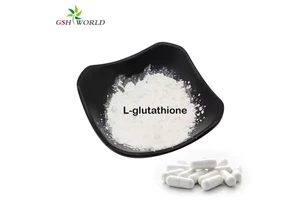The mechanism of glutathione peroxidase 3 involved in adipose tissue remodeling
Recently, Xu Hongxi, chief professor of Shanghai University of Traditional Chinese Medicine, and Xu Yu, Associate Researcher, team member, published a paper entitled Glutathione peroxidase 3 is essential for countering senescence in adipose in Redox Biology remodelling by maintaining mitochondrial homeostasis reveals the mechanism of glutathione peroxidase 3 (GPx3) in adipose tissue remodeling.

Adipose tissue (ADIpose tissue) is one of the most sensitive organs in the process of human aging. A thorough understanding of its physiological changes provides new ideas for anti-aging strategies.
Fat aging is characterized by fat redistribution and dysfunction, and is characterized by fat hypertrophy, brown/beige fat loss, and reduced fat stem cell function, while overexpansion of white adipose tissue may become an early risk factor for tissue aging.
Normally, superoxides produced during fat expansion activate antioxidant systems such as superoxide dismutase and glutathione reductase systems to maintain REDOX balance, however, the decline of the antioxidant defense system may be the key to tissue aging.
Exploring the key antioxidant targets and reactivation means in adipose tissue is of great significance for the prevention and treatment of aging.
Fat remodeling strategies such as cold stimulation and intermittent fasting help to activate mitochondrial activity, showing anti-aging potential.
The activation of endogenous antioxidant defense system in fat remodeling may be an important factor in the resistance to tissue aging. Enhancing antioxidant capacity may prevent obesity and age-related metabolic abnormalities by activating SIRT1 and maintaining mitochondrial function.
Combining clinical reports and animal models, the research team found that glutathione peroxidase 3 (GPx3) is significantly down-regulated in adipose dysfunction and may be a potential regulatory target.
The study confirmed that GPx3 is involved in fat aging, and its loss in adipose tissue impairs mitochondrial function in mice, increases susceptibility to obesity, and exacerbates aging in adipose tissue.
Loss of GPx3 may lead to mitochondrial dysfunction by disrupting the inner mitochondrial membrane. Fat remodeling management (cold stimulation and intermittent diet) effectively ameliorates aging in adipose tissue and is associated with increased GPx3 expression.
The absence of GPx3 to some extent limits the overall metabolic improvement brought about by cold stimulation. GPx3 may restrict the accumulation of intracellular reactive oxygen species during stem cell Browning, thereby affecting UCP1's participation in adipose Browning.

The study highlights the importance of regulating adipose tissue oxidation balance in anti-aging, and GPx3 may be a potential target for maintaining mitochondrial homeostasis and promoting longevity.
The study preliminarily revealed that GPx3 plays a key role in fat aging process and is a potential target for weight loss anti-aging therapy.
The research team hopes to provide new TCM based interventions for improving fat dysfunction and delaying aging through further exploration.
The first author of the paper is Song Yijie, a PhD student, and corresponding authors are Xu Hongxi, professor, and Xu Yu, associate researcher.
The research was supported by the National Natural Science Foundation of China, the R&D Program in Key Fields of Guangdong Province and the Talent Introduction Program of Shanghai University of Traditional Chinese Medicine.









